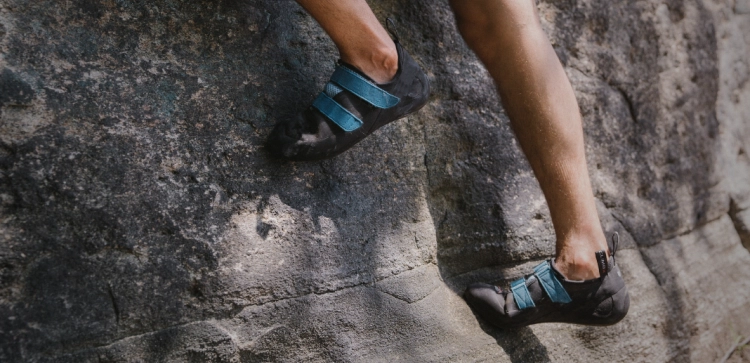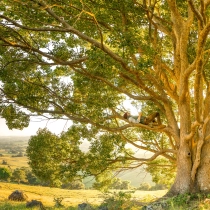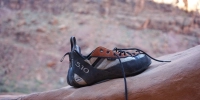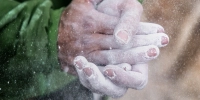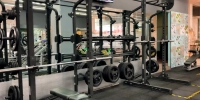The Ultimate Guide To Climbing Shoe Care: Cleaning, Storing & Extending Life

Your climbing shoes are arguably the most critical piece of gear in your climbing arsenal. They are your direct connection to the rock or plastic, providing the friction and sensitivity needed to send your projects. Just like any high-performance equipment, proper care for your climbing shoes is paramount to maintaining their grip, sensitivity, and ultimately, extending their lifespan. Neglecting your shoes can lead to reduced performance, uncomfortable wear, and a much shorter journey from brand new to beat-up.
This comprehensive guide will walk you through everything you need to know about how to care for your climbing shoes, how to clean climbing shoes, ensuring they stay in top condition, smell fresh, and perform optimally for countless climbs.
- Why Proper Care Of Climbing Shoes Is Important
- So Why Do Climbing Shoes Smell?
- How Do You Prevent Climbing Shoes From Smelling?
- Cleaning Your Climbing Shoes
- How To Wash Climbing Shoes Properly?
- Things Not To Do When Cleaning Climbing Shoes (Tips To Avoid Damage During Cleaning)
- Drying Your Climbing Shoes
- Storing Your Climbing Shoes
- Regular Maintenance
- When To Resole
- When To Replace Climbing Shoes
- Conclusion
- Frequently Asked Questions
Why Proper Care of Climbing Shoes is Important
Proper care of climbing shoes is essential for maintaining their performance and extending their life. Neglecting your shoes can lead to reduced grip, decreased sensitivity, and a shortened lifespan. Beyond performance, consistent care prevents common issues like unpleasant odors and potential bacterial growth, ensuring your shoes remain comfortable and hygienic.
So Why Do Climbing Shoes Smell?
Climbing shoes smell primarily due to the buildup of sweat, dirt, and bacteria. Your feet sweat considerably when you climb, and this moisture, combined with dead skin cells and warmth inside the shoe, creates an ideal breeding ground for bacteria and fungi. These microorganisms break down the organic material, releasing volatile compounds that produce the strong, often unpleasant odor commonly associated with climbing shoes.
Why Are Smelly Climbing Shoes So Common?
Smelly climbing shoes are common for several reasons inherent to their use and design. Firstly, climbing shoes are often worn without socks, allowing direct contact between sweaty feet and the shoe lining. Secondly, they are typically tight-fitting and made from materials that don't always breathe well, trapping moisture and heat. Lastly, they are frequently put away in gear bags immediately after use, further sealing in dampness and promoting bacterial growth. This combination of factors makes odor a persistent challenge for climbers.
How Do You Prevent Climbing Shoes from Smelling?
Preventing your climbing shoes from smelling, and effectively stopping existing odors, relies on a proactive approach that starts with good habits before and after you climb. By taking simple, consistent steps, you can significantly reduce the conditions that lead to odor and neutralize any existing smells.
- Self-Care is Actually Important: Begin by ensuring your feet are clean. Always wash your feet thoroughly before putting on your climbing shoes. This reduces the transfer of dirt, oils, and bacteria into the shoe.
- Chalk Your Feet: A light dusting of climbing chalk on your feet can absorb sweat and moisture, helping to keep them dry and less hospitable for bacteria.
- Take Off Shoes Between Routes: During a climbing session, take off your shoes between routes. This allows them to air out, reducing moisture buildup and heat, which are key contributors to bacterial growth.
- Brush off Dirt: After each session, use a stiff brush (like a dedicated shoe brush or an old toothbrush) to gently remove any loose dirt, chalk, or debris from the rubber soles and uppers. This prevents buildup that can become harder to remove later.
- Let Your Shoes Air-Dry After a Session: Always allow your shoes to air-dry completely after a climbing session, especially if you need to put them in a closed bag for transport later. This is crucial for preventing moisture and heat from creating a breeding ground for bacteria.
- Use a Shoe Deodorizer Spray: For both prevention and treatment of existing smells, apply a dedicated climbing shoe deodorizer spray directly into your shoes. These sprays are formulated to kill bacteria and germs, which are the root cause of bad smells.
- Apply Baby Powder: After using a deodorizer spray or as a standalone preventive measure, generously dust the insides of your shoes with baby powder (scented or unscented). Baby powder effectively absorbs residual moisture and helps to dry out the interior, preventing new bacterial growth and leaving a fresher scent. It can also soften the insides, making downsized shoes more comfortable.
If, after consistently applying these prevention and deodorizing methods for a few sessions, your shoes still retain a significant odor, it might be a good time to proceed with a thorough wash, as described in the next section.
Cleaning Your Climbing Shoes
Cleaning your climbing shoes is an essential part of caring for them. Dirt, sweat, and oils can build up on the shoe's surface and within the lining, reducing grip and leading to odor and fungal infections. Regular cleaning helps maintain both hygiene and performance.
How to Wash Climbing Shoes Properly?
When your shoes need more than just a brush-off, it's time for a deeper wash. This is particularly important for addressing grime and tackling persistent smells.
What You'll Need:
- Lukewarm water
- Mild detergent (dish soap or a specialized climbing shoe cleaner)
- Soft-bristled brush (an old toothbrush works well for crevices)
- A clean cloth or sponge
- (Optional for odor) White vinegar or a specialized shoe deodorizer, baby powder
Step-by-Step Cleaning Process:
- Prepare a Solution: Fill a basin or sink with lukewarm water. Add a small amount of mild detergent.
- Clean the Exterior: Dip your soft-bristled brush or cloth into the soapy water. Gently scrub the exterior of your shoes, paying attention to the rubber rands, soles, and any dirty spots on the upper.
- Clean the Interior: For general refresh, use a solution of lukewarm water and a small amount of white vinegar (a 1:1 or 1:2 vinegar-to-water ratio works well) or a specialized climbing shoe deodorizer. Dip your brush into this solution and gently scrub the inside lining of your shoes. This helps to neutralize sweat and eliminate bacteria.
- Rinse Thoroughly: Rinse the shoes under clean, running lukewarm water. Ensure all soap residue is completely washed away.
- Gentle Squeeze: Gently squeeze out any excess water from the shoes. Don't wring or twist them, as this can deform their shape.
Things Not to Do When Cleaning Climbing Shoes (Tips to Avoid Damage During Cleaning)
To protect your investment and the integrity of your shoes, it's critical to know what to avoid when cleaning them:
- Avoid Machine Wash for Cleaning Climbing Shoes: Never put your climbing shoes in a washing machine unless the shoe manufacturer explicitly states that it is safe to do so. The aggressive tumbling, strong detergents, and high temperatures can severely damage the delicate rubber sole, melt the glue, and permanently deform the shoe's precise shape and fit. Machine washing will dramatically shorten your shoe's lifespan and compromise its performance.
- No Dryer: Similarly, never put climbing shoes in a clothes dryer, unless the shoe manufacturer explicitly states that it is safe to do so. The intense heat will melt glues, shrink materials, and ruin the shoe's structure.
- No Harsh Detergents or Bleach: Stick to mild detergents, such as dish soap or specialized climbing shoe cleaner. Harsh detergents or bleach can degrade the material and affect the shoe's grip.
- Avoid Excessive Force: When scrubbing, use lukewarm water and a soft-bristled brush to gently scrub away dirt and stains. Do not use too much force or pressure, as this can damage the shoe's materials.
- Don't Over-Clean: Clean them only when necessary. Excessive washing can wear down materials prematurely and affect the shoe's grip and structure over time.
Drying Your Climbing Shoes
Proper drying is essential for maintaining the shape and integrity of your climbing shoes. Wet shoes can lose their shape, become less comfortable, and foster bacterial growth.
- Air-Dry Naturally: The best method for maintaining the shape and integrity of your climbing shoes is to allow them to air-dry completely in a well-ventilated area. This ensures all moisture evaporates safely.
- Open Them Up: If possible, open up the shoes as much as you can (e.g., loosen laces, open Velcro straps) to maximize air circulation inside the shoe.
- Avoid Direct Sunlight or Heat Sources: Keep shoes away from direct sunlight, radiators, or any artificial heat sources. Intense heat can dry out leather, melt glues, and warp synthetic materials, leading to deformation and reduced performance.
- Stuff with Paper (Optional): For very wet shoes or to help maintain shape, you can loosely stuff the toes with crumpled newspaper or paper towels. These will absorb moisture. Remember to change the paper periodically as it gets damp.
Storing Your Climbing Shoes
Proper storage is another critical aspect of caring for your climbing shoes. Improper storage can lead to deformation, reduced performance, and accelerated degradation of materials.
Why Proper Climbing Shoe Storage Matters
Proper climbing shoe storage matters immensely because it directly impacts the longevity, performance, and hygiene of your shoes. Storing them correctly prevents them from losing their sensitive shape, protects the rubber from damage, and inhibits the growth of odor-causing bacteria and fungi. Neglecting storage can lead to warped shoes, reduced grip, and unpleasant smells, ultimately shortening their usable life.
Best Practices for Climbing Shoe Storage
Here are some best practices to keep your shoes in excellent condition between climbs and for longer periods:
- Find a Well-Ventilated Space: After each climbing session, always remove your shoes from your gym bag or backpack. Place them in a well-ventilated space where they can fully air out and dry naturally.
- Keep Them Away from Sunlight and Extreme Temperatures: Avoid storing them in direct sunlight, or in places exposed to extreme hot or cold temperatures (like a car trunk). Both can degrade the rubber and glues over time.
- Allow Shoes to Air Out and Dry Naturally: Do not lock up your shoes in a closed bag or sealed container immediately after use. This traps moisture and heat, creating the perfect environment for bacteria and mold, which leads to strong odors and material degradation. Let them breathe! This helps prevent moisture retention and odor buildup.
- Clean and Brush Shoes Regularly: Before long-term storage, ensure your shoes are clean and dry. Regular cleaning helps prevent any residual dirt or sweat from damaging the materials over time.
- Avoid Excessive Force or Compression: Do not store your shoes in a way that compresses or deforms their shape. Maintaining their original, precise fit is crucial for performance.
- Consider a Shoe Deodorizer: For long-term storage or if you're concerned about lingering odors, consider placing a shoe deodorizer insert or sachet inside each shoe.
- Store Climbing Shoes Separately: Ideally, store your climbing shoes separately from other sweaty climbing gear like chalk bags or harnesses, especially if those items are damp.
Regular Maintenance
Beyond cleaning and storage, regular maintenance can help you get the most out of your climbing shoes by addressing wear before it becomes critical.
- Check for Wear: Regularly inspect your shoes for signs of wear and tear, especially the rubber on the toes, edges, and rand. Early detection of wear can mean the difference between a simple resole and needing a new pair.
- Minor Repairs: For minor delaminations or small tears in the upper, a strong adhesive like Shoe Goo or specialized shoe repair kits can often provide a temporary fix, extending the life of your shoes until a more significant repair or resole is needed.
When to Resole
Resoling is a crucial part of extending your climbing shoes' life. It's time to resole when the rubber on the toe, rand, or sole wears thin but the upper is still in good condition. A good resoler can replace the worn rubber, restoring your shoe's grip and performance without the cost of a brand new pair. Look for a reputable resoler who specializes in climbing shoes to ensure quality work.
When to Replace Climbing Shoes
Even with the best climbing shoe care, there comes a time when replacement is necessary. Knowing when to replace climbing shoes depends on several factors, indicating that the shoe's performance or structural integrity has been compromised beyond repair.
- Holes in the Rubber: If you've worn through the rubber and there are visible holes in the underlying fabric or leather, the shoe has lost its structural integrity and performance. While some small holes on the very tip might be patchable by a resoler, larger holes or multiple worn-through areas mean it's time for a new pair.
- Deformed Shape: If the shoe has lost its original shape, stretched out excessively, or become permanently deformed to the point where it no longer fits snugly or supports your foot, its performance will be severely compromised.
- Sole Delamination: If the sole is peeling off significantly and can't be re-glued effectively, the shoe is likely at the end of its life.
- Loss of Stiffness/Support: For certain climbing styles (like edging), shoes rely on their stiffness. If your shoes have become excessively soft and no longer provide adequate support, it might be time for an upgrade.
- Multiple Resolings: While resoling is great, there's a limit. After multiple resolings, the shoe's upper might start to degrade, or the overall fit might change too much to be effective, making a new pair a better investment.
Conclusion
By diligently following these climbing shoe care practices – from meticulous cleaning and proper drying to smart storage and timely resoling – you can significantly extend the life and performance of your valuable climbing shoes. Investing a little time in their care will pay off in better performance on the rock, fewer trips to the gear shop, and a fresher smell in your climbing bag. Keep them clean, dry, and stored correctly, and your climbing shoes will be your reliable partners for many vertical adventures to come.
Frequently Asked Questions
Here are answers to some common questions about climbing shoe care:
How often should I clean my climbing shoes?
For basic hygiene and performance, it's good to brush off dirt after every session and allow them to air dry. A deeper wash (as described in "Thoroughly Cleaning Your Climbing Shoes") is recommended every few weeks, or whenever they develop a significant odor that prevention methods can't handle.
How long do climbing shoes last?
The lifespan of climbing shoes varies greatly depending on usage frequency, climbing style, material, and how well they are cared for. With proper care and timely resoling, a good pair can last for several years. Without care, they might only last a few months.
Can I put my climbing shoes in the washing machine or dryer?
Generally, no. We strongly advise against putting climbing shoes in a washing machine or dryer as the harsh conditions can damage the rubber, melt glues, and deform the shoe's shape. Always check the shoe manufacturer's specific care instructions; only proceed with machine washing or drying if explicitly stated as safe.
Should I wear socks with climbing shoes?
Most climbers wear climbing shoes without socks for maximum sensitivity and a precise fit. However, wearing thin socks can sometimes help absorb sweat and reduce odor, especially for casual climbing or if you're prone to very sweaty feet. If you do wear socks, ensure they don't compromise the fit or performance.
What's the best way to get rid of a bad smell in my climbing shoes?
The best approach involves a combination of methods: regular air-drying after each use, using shoe deodorizer sprays, and applying baby powder to absorb moisture. If the smell persists, a thorough hand wash of the shoes (especially the interior) with mild soap and vinegar can be very effective. Consistency is key!
When should I consider resoling my climbing shoes?
You should consider resoling when the rubber on the sole or rand wears thin, but before you wear through to the rand or upper material. Resoling can significantly extend the life of your shoes at a fraction of the cost of a new pair, provided the rest of the shoe is still in good condition.



